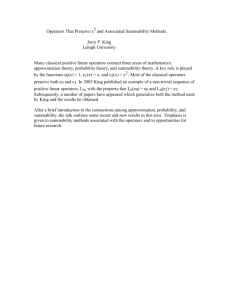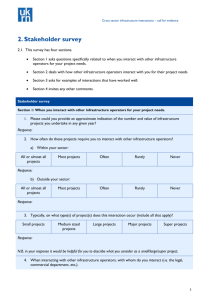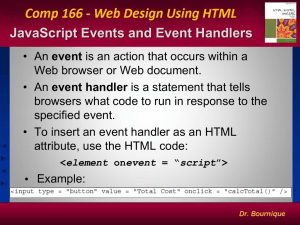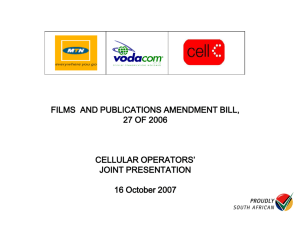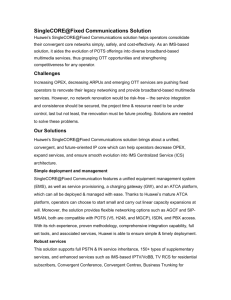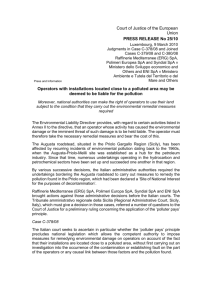How to Start A Peer Driven Room & Board Coalition
advertisement
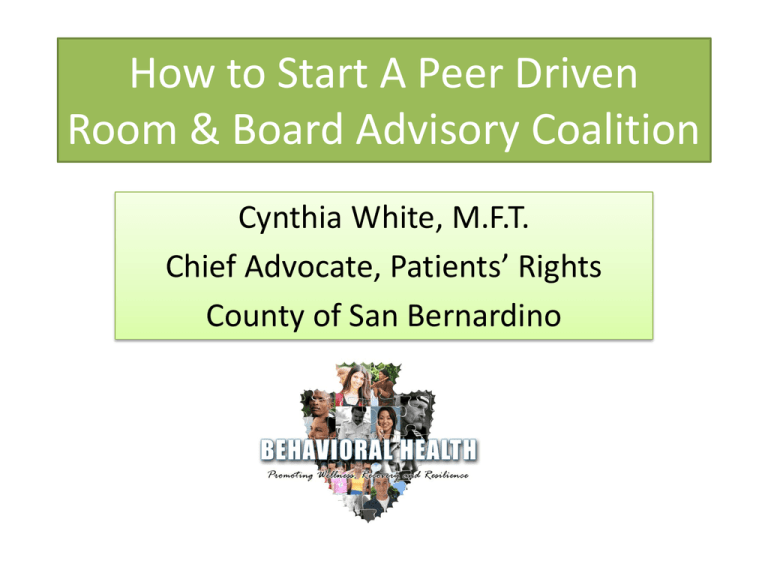
How to Start A Peer Driven Room & Board Advisory Coalition Cynthia White, M.F.T. Chief Advocate, Patients’ Rights County of San Bernardino Call to Action Due to unfortunate circumstances, Room & Boards came to the forefront of Patients’ Rights attention Consumers were being taken advantage of in a variety of ways – fiduciary, poor standards CoSB-DBH stopped using existing list-which historically gathered from all over and not verified Federal Fair Housing Act FHA defines discrimination as “a refusal to make reasonable accommodations in rules, policies, practices or services , when such accommodations may be necessary to afford (handicapped) person(s) equal opportunity to enjoy a dwelling.” The Continuum of MH Housing Independent Living Medical , Supervision or ADL Care needed Stabilization needed Locked facilities Board & Cares Room & Boards Housing Costs in SB County Board & Care *900-$1,086 per month Def: Facilities that provide 24-hour non-medical care for adults ages 18-59, who are unable to provide for their own daily needs. Adults may be physically handicapped, developmentally disabled and/or mentally disabled. Room & Board ** $350-$700 per month Def: a place to live which includes bed, electricity, water and food. For adults who are able to provide for their own daily needs. SOURCE: * Community Care Licensing, Title 22 ** DBH Homeless Program Peer Driven Room & Board Advisory Coalition Mission Statement To provide Room & Board consumers a resource tool to assist in renting healthy, safe, well managed and quality room and board housing. Values Statement • To recognize the dignity and worth of all human beings • To acknowledge that clients are the experts of their experience • To empower consumers to develop leadership skills • To promote and encourage consumer selfadvocacy skills • To facilitate a positive partnership between consumer and room and board operators • To advocate for consumers of room and board facilities • To educate consumers on available resources • To actively participate in monthly coalition meetings. Wellness & Recovery includes… Steps toward Self Determination Setting goals for symptom management, work, education, socialization and housing Accessing information to make informed choices Acquiring confidence and developing a sense of personal accountability Being woven into the community Empowerment is the key! Wellness and Recovery promotes selfdetermination – including housing choices Room & Boards are a popular choice among mental health clients due to: -Limited, fixed income -Meals are included -Socialization opportunities -Affordability Client Issues with Room & Boards Quality of housing Quality & quantity of food Not getting what you paid for R&B operators as the payee Poor or NO record keeping of P&I money Rude and discourteous treatment from staff Arbitrary rules Lack of accountability “Oral” rental agreements Increased number of tenants over time Arbitrary evictions R&B Operators had issues as well Disruptive behavior Agency contacts in the home Unreliable payments Destruction of property Complaints from neighbors Uncooperative, demanding tenants Drug/alcohol issues Security issues Police involvement Getting a bad reputation Provider concerns… Providers want to be able to provide a location that is safe and reputable Ethically responsible for client safety upon discharge Housing is essential to client wellness No means to “report” or “complain” on R&B’s Seeking solutions that are client centered Background Work to be Done Check with your Local Housing Authority for any considerations Review city requirements – Fire Clearance, Business License Identify a location for regular meetings Develop goals of Coalition (different than Mission Statement) Identify current R&B Operators in county Seeking out Participants 1) Solicit participants from local Clubhouses 2) Seek current Providers of Behavioral Health 3) Encourage NAMI members to participate 4) Allow community members and volunteers to join 5) Seek agency participation – e.g. local community groups, homeless services 6) Find existing R&B Operators First Steps as a Coalition Mission Statement – what are you hoping to accomplish? Code of Ethics – define your standards. Conflict of interest? Adherence to rules necessary for participation. Membership requirements Application, site review, attendance, fee? Define Training Necessary – conduct needs assessment from Consumers, Operators, Providers Develop a Complaint Resolution Committee Governing Board • Decide what titles you want to have Director, Chairperson, Co-Chair and a Complaint Resolution Committee Chair? • Establish the guidelines for election and participation. Establish roles for each position. • Encourage regular participation so members can benefit from the trainings. Additional considerations… How often should you hold meetings? Where are they to be held? Can they move locations for large counties? How long will the meetings be? What are the standard meeting agenda items? Define your training schedule after needs assessment is done and line up presenters Remember Cultural Competency considerations Sample Meeting Agenda Welcome New members introduction – Self PTSD – How to recognize and help – Pts. Rts. Staff Discharge Considerations – SB Community Hospital Recipe of the Month – a healthy alternative Low Cost Socialization Ideas - Various Cultural Competency Insights – Office of Cultural Competency Other topics we have shared… Board & Care vs. Room & Board Depression – Taking positive steps Communication 101 Preparing for an Emergency – Developing Action Plans for the Room & Board Disaster Preparedness – Taking care of those in your home Being Culturally Sensitive The Process Consumer seeks independent living arrangement List is provided via clubhouse, case manager, or mental health provider Consumer is guided through available options based on personal needs Consumer makes selection and calls for interview Consumer makes selection(s) – appropriate information sheet(s) is provided Consumer visits location and enters into rental agreement with operator Maintaining the List Operators are asked to call by Monday at noon any changes to their vacancy status New lists sent electronically each Tuesday to all recipients that have been trained on the process – (note: operators do not get lists) Operators can be suspended or removed from list if they do not comply with Coalition guidelines. Paperwork… Interest/Application Forms Site Review Forms Complaint Resolution Form Room & Board Comparison List Lessons Learned… Membership drive must be ongoing Operators stop attending once their houses become full – have a participation policy Develop Resolution Committee quickly Line up several presenters of information based on training needs assessment Provide a consistent day and time for attendance Be willing to “hand over” the process to the community Questions?


